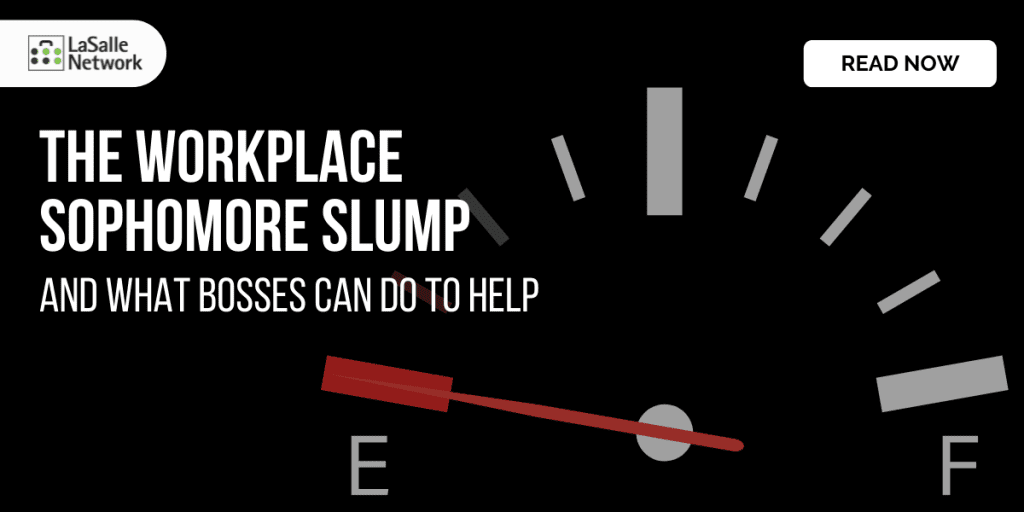Year one of anything is new and exciting. Whether it’s freshman year of college, a new relationship, or the first year of a job at any stage of someone’s career. Then year two hits, and what was once new starts getting repetitive. Things might start to get stale and not feel as exciting. This is known as a sophomore slump.
This happens frequently in the workplace, too. New hires join a company, and in their first year, they’re aggressive, motivated and moving fast. They’re asking questions to get better, and are excited to learn more about their roles and the business. Then year two comes along, and it’s not fresh anymore. That initial excitement is gone, and as a result, employees become less engaged, leading to a dip in productivity.
Realistically, we can’t go 100 mph every day of the year, year after year. At some point we all have a temporary slowdown, but it should be just that – temporary. At some point, things have to rebound, but managers need to step in and help. Here’s how:
Address it.
Have the tough conversation. Ideally, employees already know they are in a slump, but other times, they don’t see it. Managers can’t assume employees will approach them about it. If you notice that an employee is in a slump, talk to them about it and share specific examples, whether it’s about the employee contributing less during team meetings or not showing excitement when put on a large, career-building project.
Don’t assume they have noticed they’re in a slump, or that it is always work-related. There may be other things happening in the employee’s life contributing to them becoming less engaged, so asking what is happening and providing support is important.
Change things up.
Add variety to the workday. If nothing has changed about employees’ responsibilities, you can’t expect them to get better. As the saying goes, insanity is doing the same thing over and over again but expecting different results. Even switching up simple responsibilities or routines could help re-engage somebody. It could be changing where the employee sits or putting them on a project with different people. A new project with new co-workers could help the employee get competitive again.
Connect them with others.
Encourage slumping employees to talk with more tenured team members and leaders. This could involve a formal mentorship program or simply asking another person who has gone through something similar to take the employee to coffee or lunch. The more-experienced employees can share how they overcame the slump and stayed motivated throughout the process. For anyone who is in a rut, it’s encouraging to hear the rebound stories of others who have come out of it and turned into top performers.
Create a plan.
Work with the employee to create a step-by-step process of what they can do to improve. This plan could include workshops to attend, books to read or people, internally or in the industry, to speak with. It’s important to do this with the employee, not for them, so the employee can offer input and ultimately be more invested and willing to execute it. Then, hold the employee accountable to doing each step and meet weekly to discuss what progress has been made. Open and frequent communication is necessary.
Praise them.
If an employee was working hard in year one and had no praise or acknowledgment, that could be one reason for the dip in year two. Employees may not be motivated if they aren’t recognized for their work. Managers should celebrate the small wins publicly. It will help the employee regain confidence and stay positive.
Go back to the basics.
Sometimes going back to what once worked can fix the problem. If there was a process the employee steered away from over the year that used to produce results, go back to it.
If you’re hiring, let us help. Get connected with us here.




